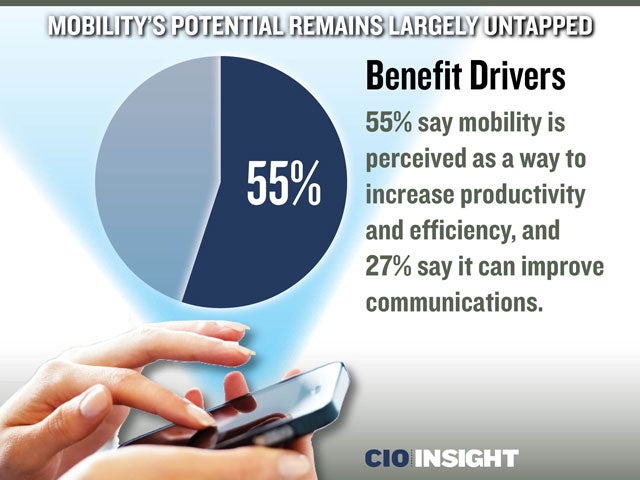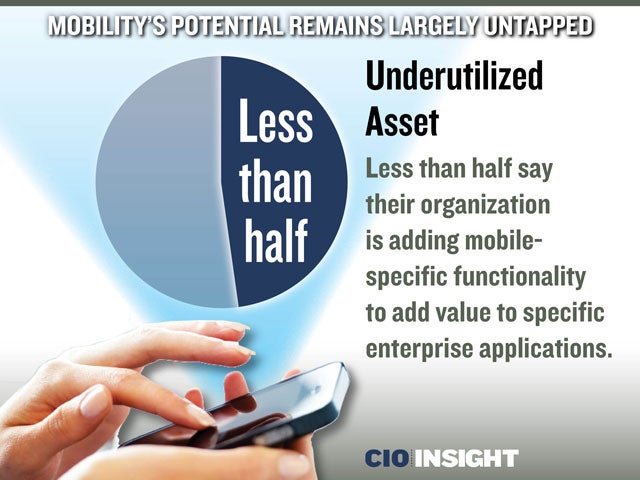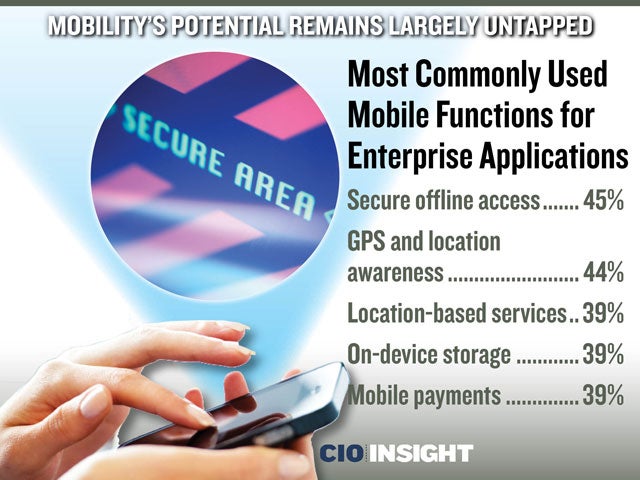
Mobility’s Potential Remains Largely Untapped
 Good Intentions
Good Intentions
78% of CIOs and other senior tech leaders say their organization embraces advances in mobile tech to benefit business.
 Benefit Drivers
Benefit Drivers
55% say mobility is perceived as a way to increase productivity and efficiency, and 27% say it can improve communications.
 Unappreciated Potential
Unappreciated Potential
Only 14% say their company perceives mobility as a way to transform business processes and open up new revenue opportunities.
 Underutilized Asset
Underutilized Asset
Less than half say their organization is adding mobile-specific functionality to add value to specific enterprise applications.
 Wish List
Wish List
87% say a majority of their employees would benefit from increased access to enterprise apps like CRM, ERP and SharePoint on mobile devices.
 Prohibitive Factor, Part I
Prohibitive Factor, Part I
72% say it’s too costly to integrate mobile innovations into legacy apps.
 Prohibitive Factor, Part II
Prohibitive Factor, Part II
66% say it’s too complex to integrate mobile innovations into legacy apps.
 Most Commonly Used Mobile Functions for Enterprise Applications
Most Commonly Used Mobile Functions for Enterprise Applications
Secure offline access: 45%, GPS and location awareness: 44%, Location-based services: 39%, On-device storage: 39%, Mobile payments: 39%